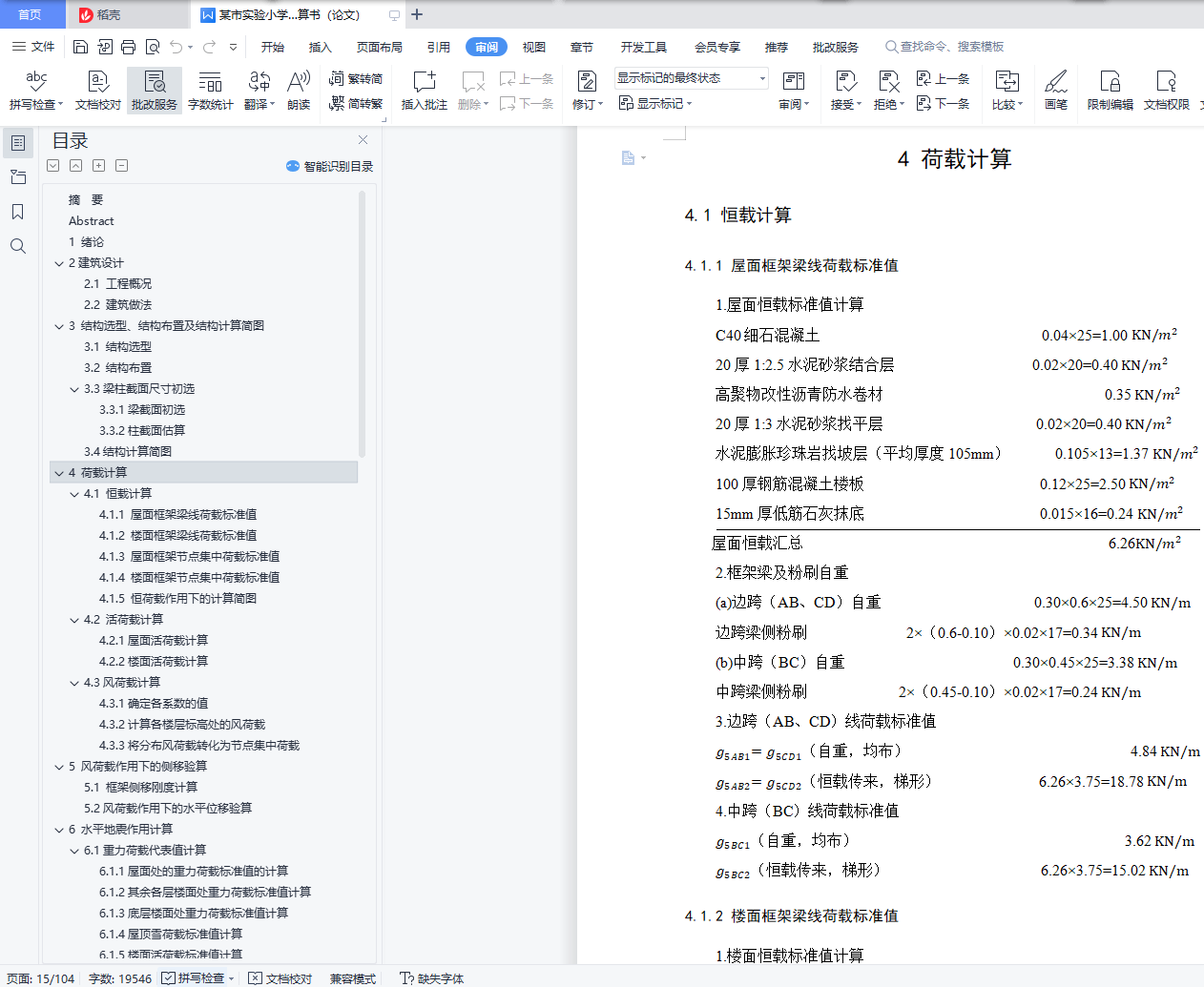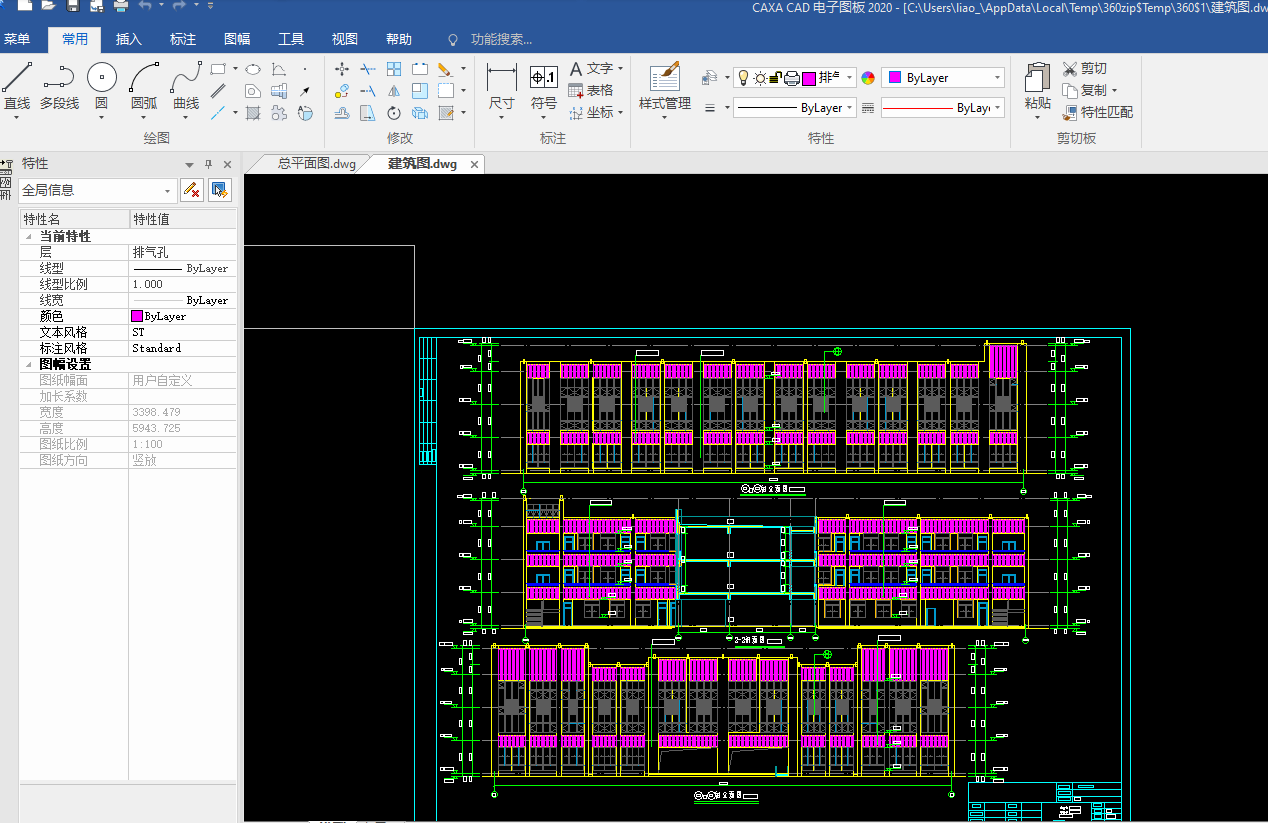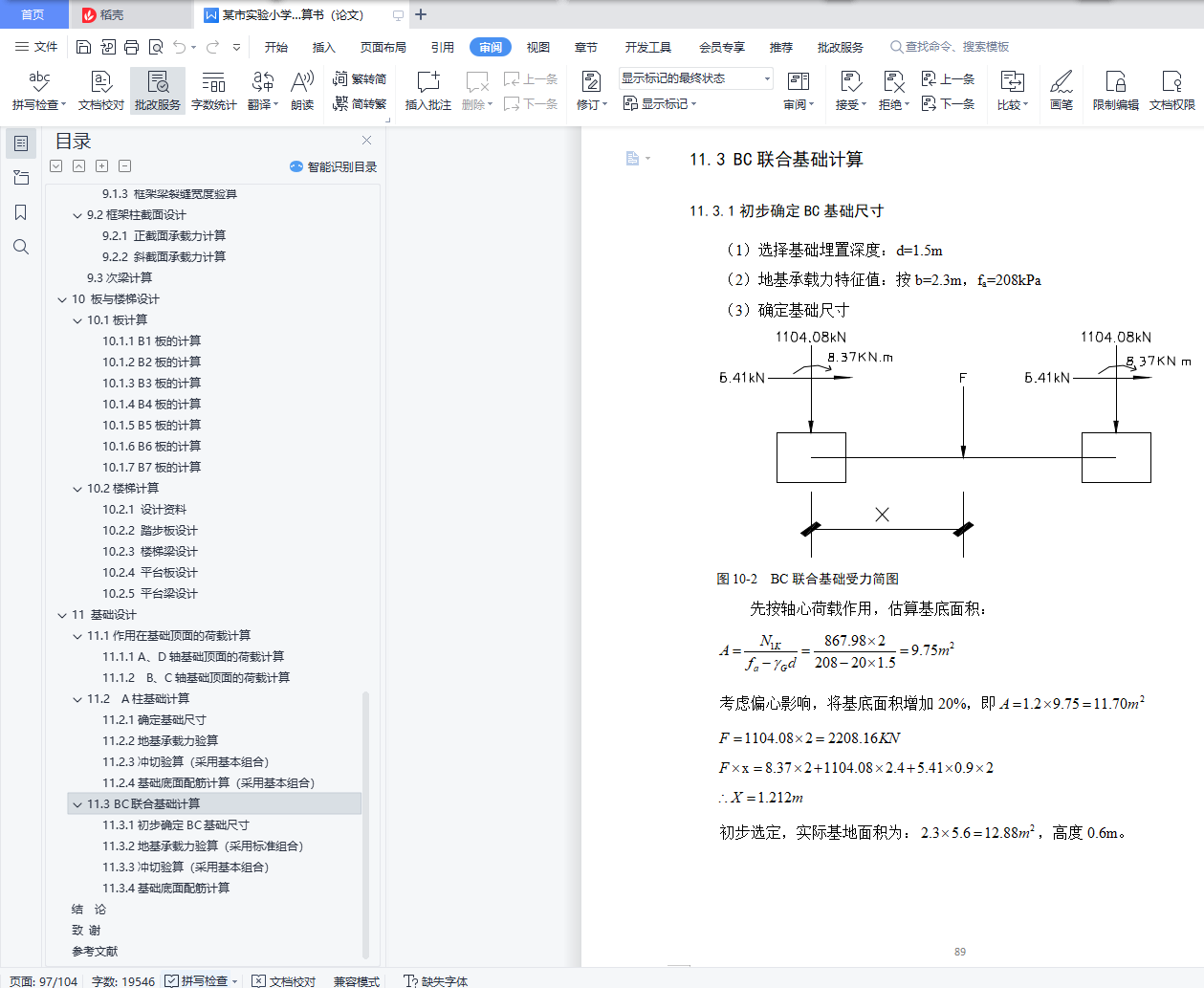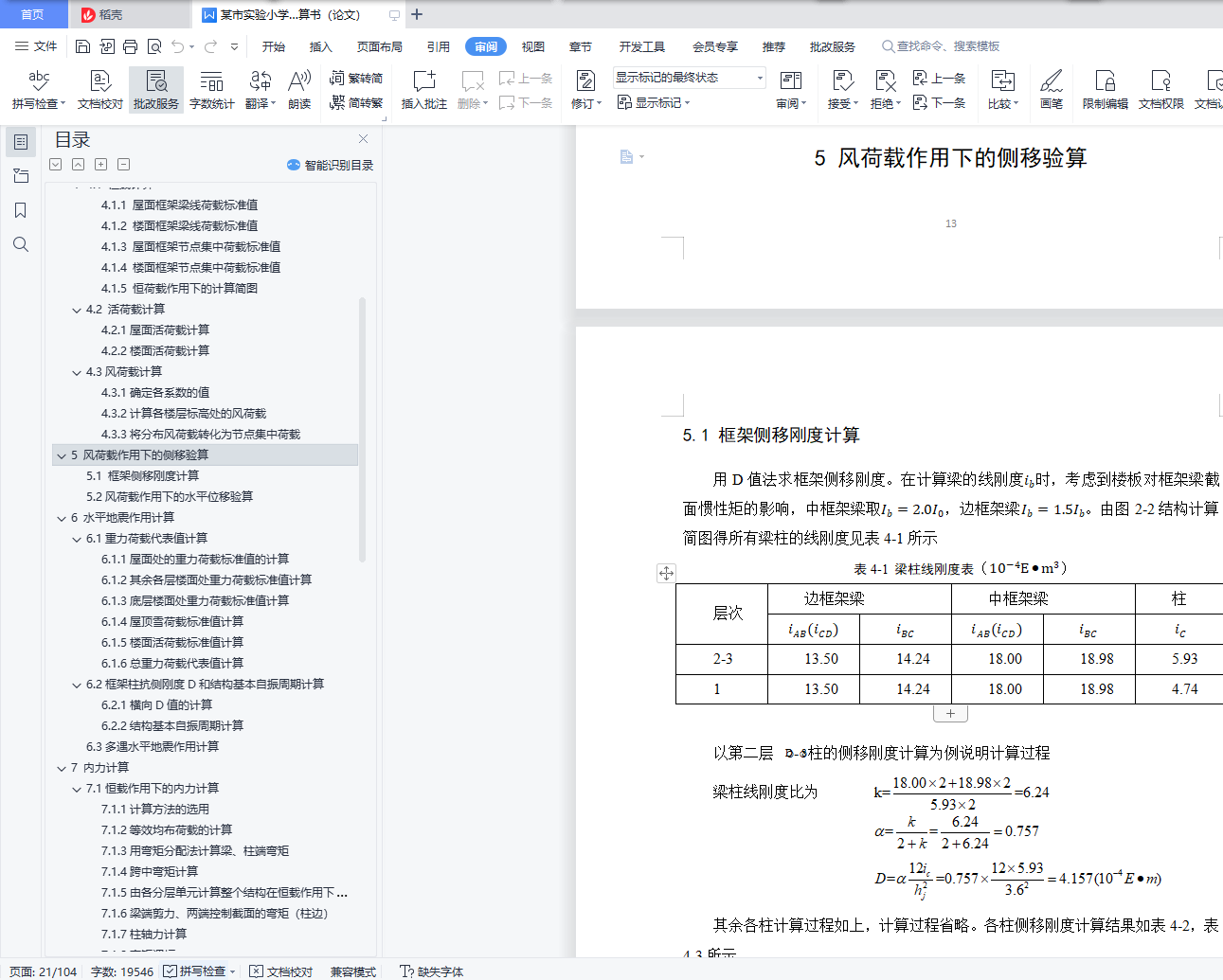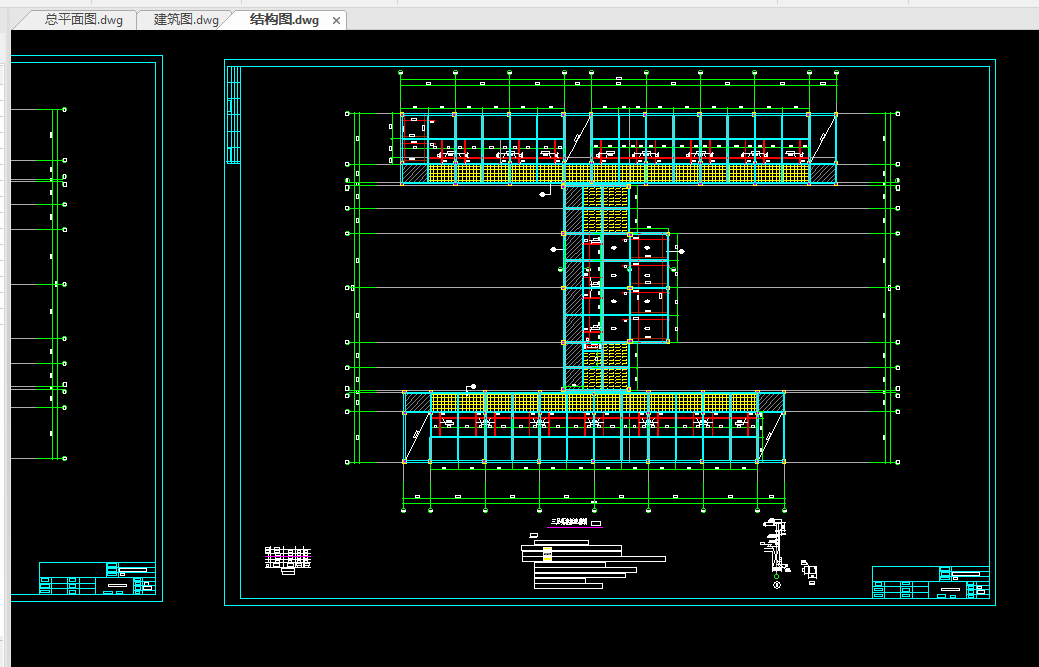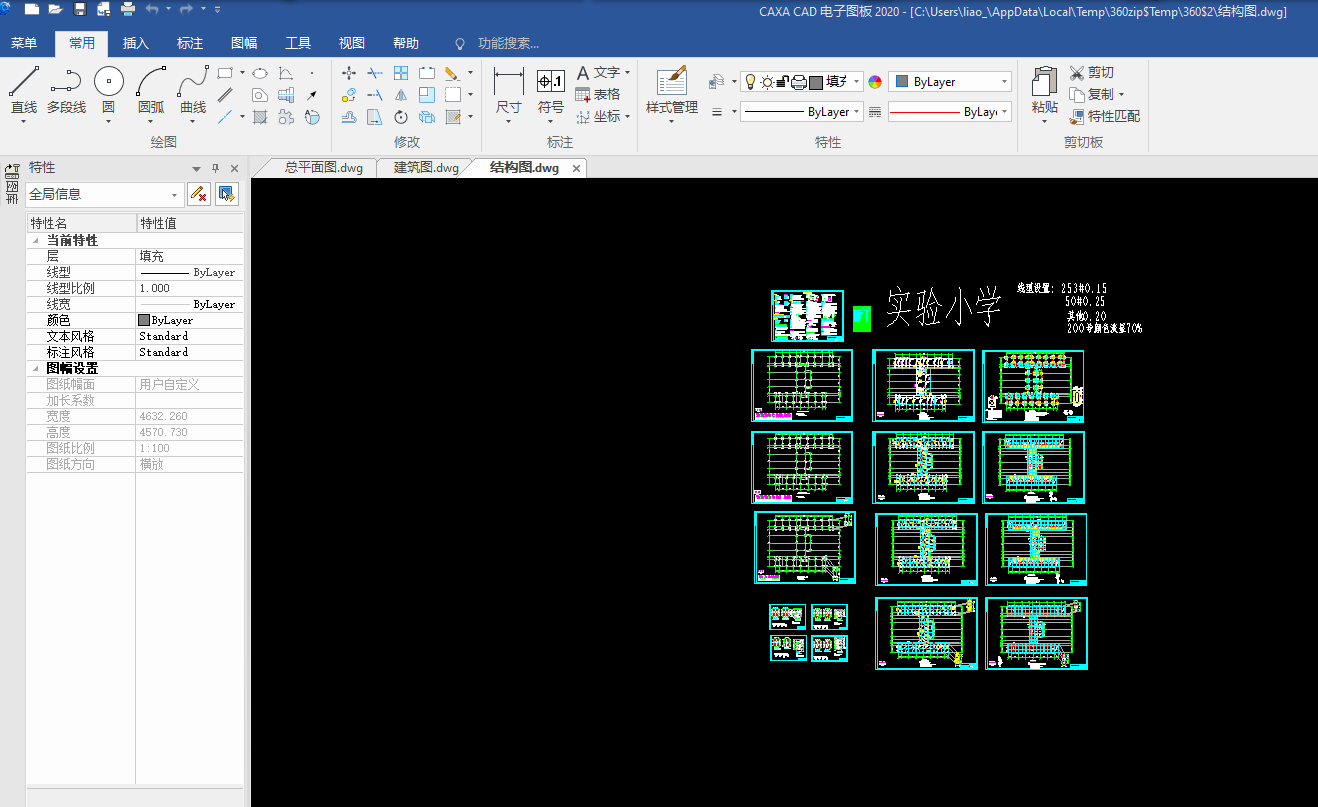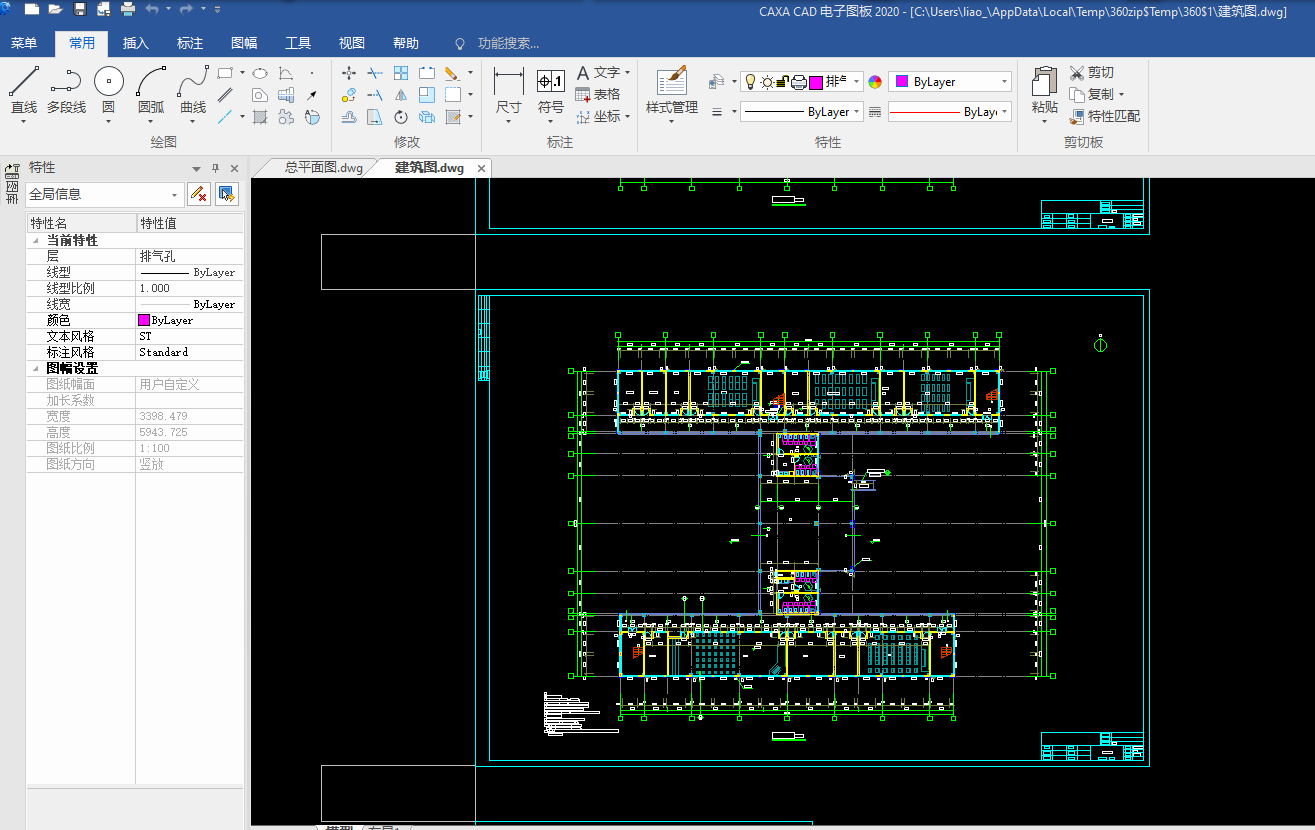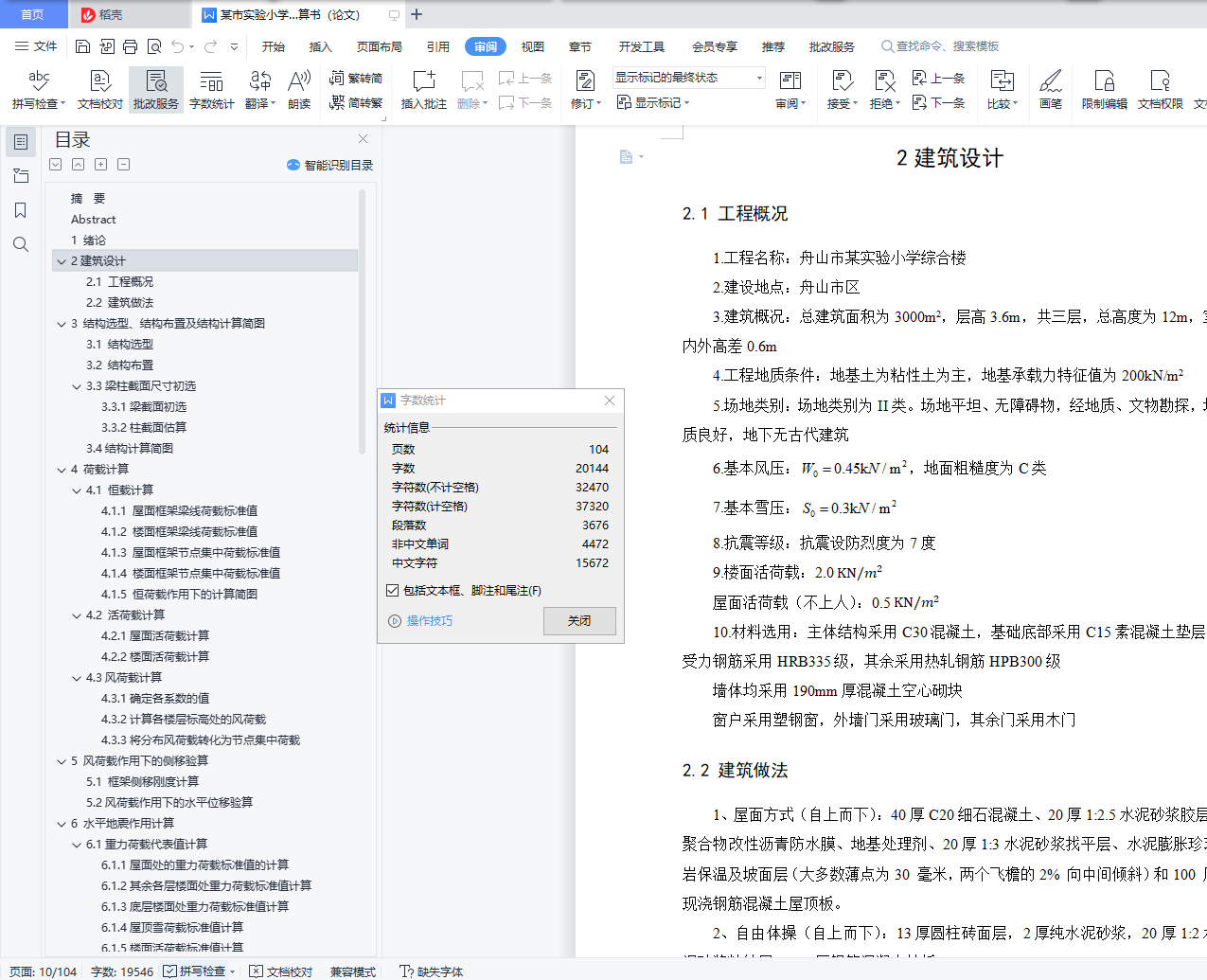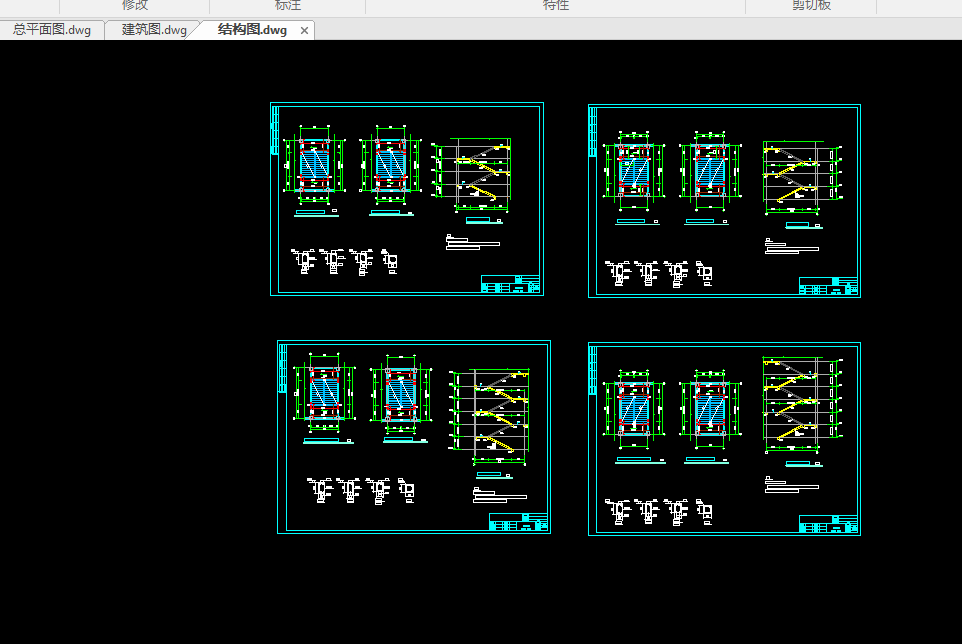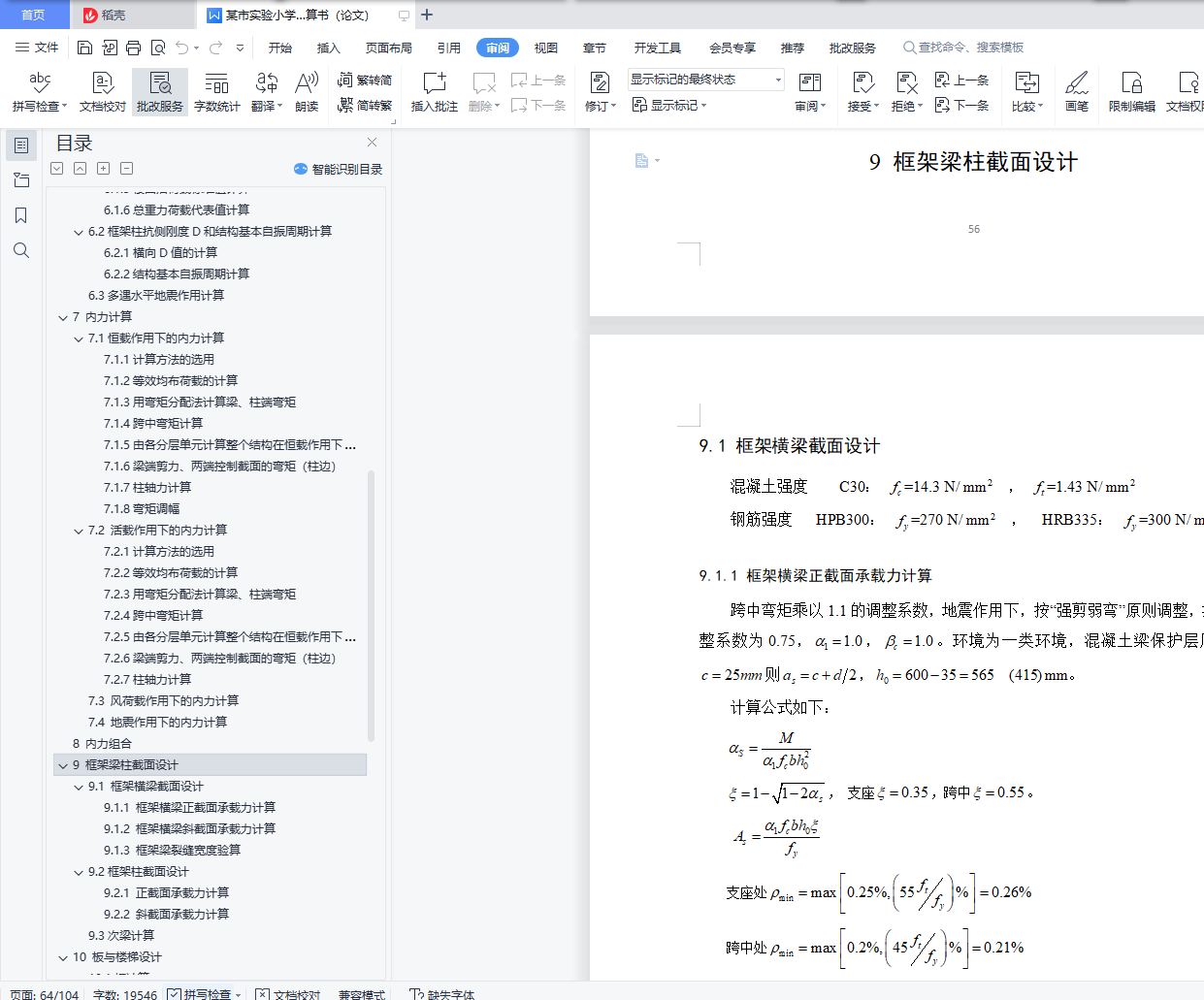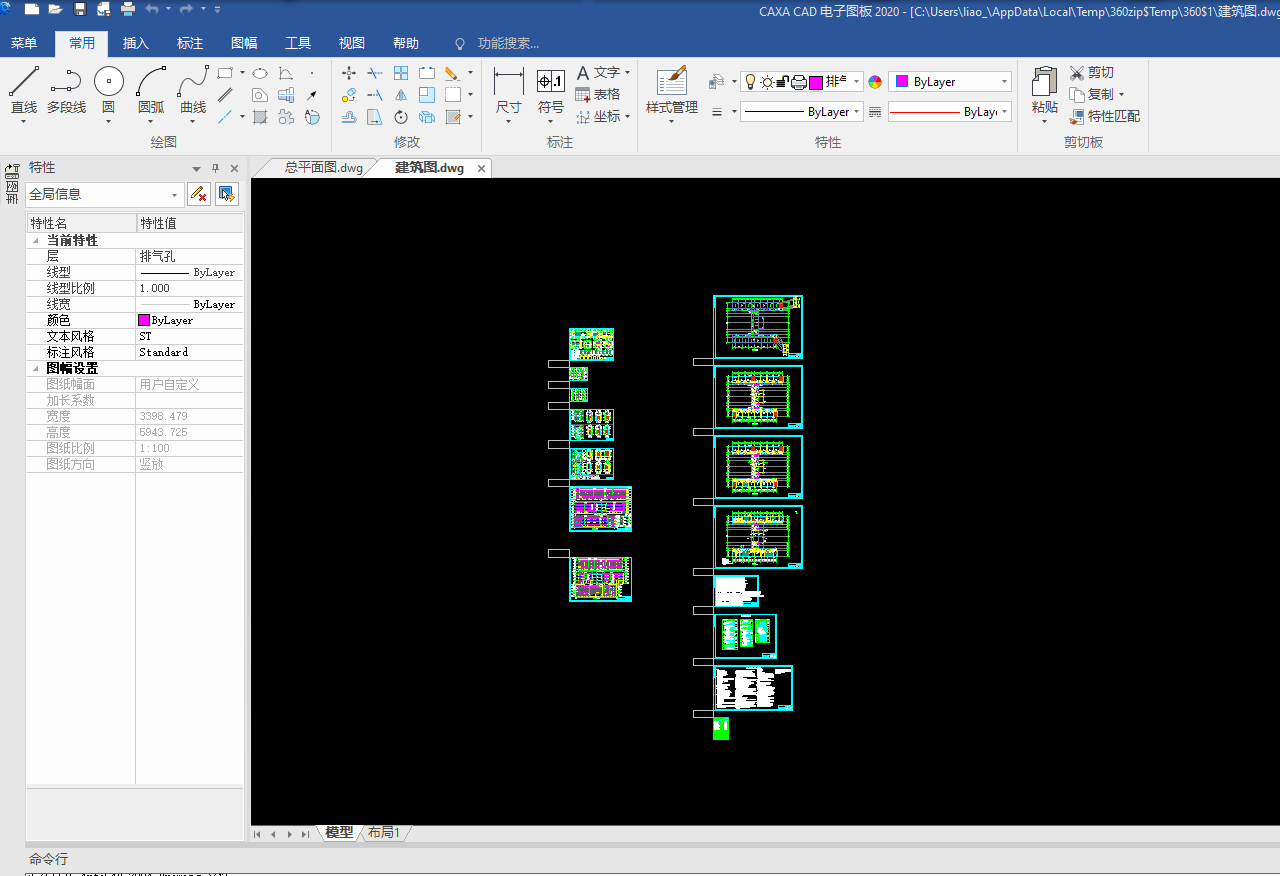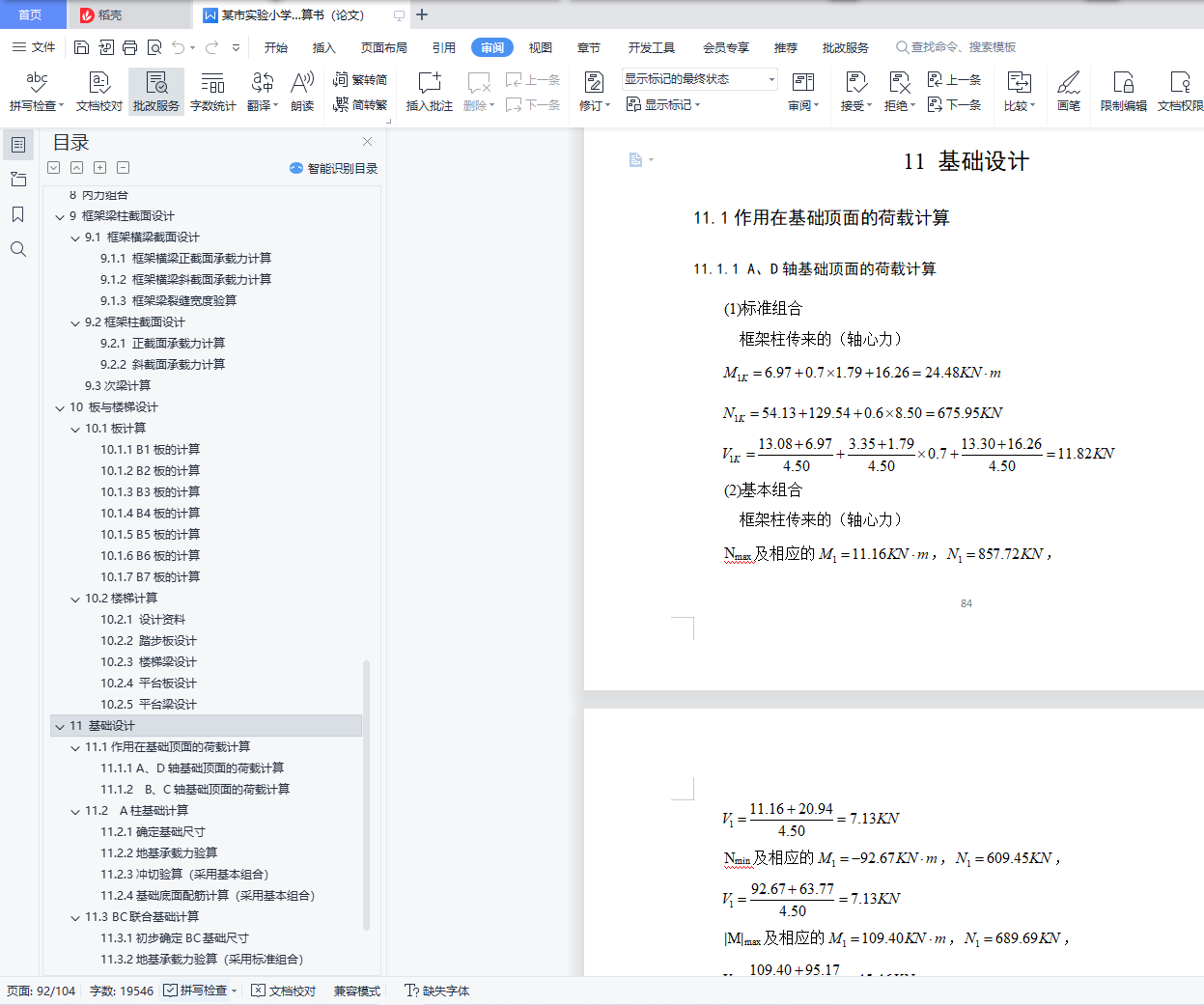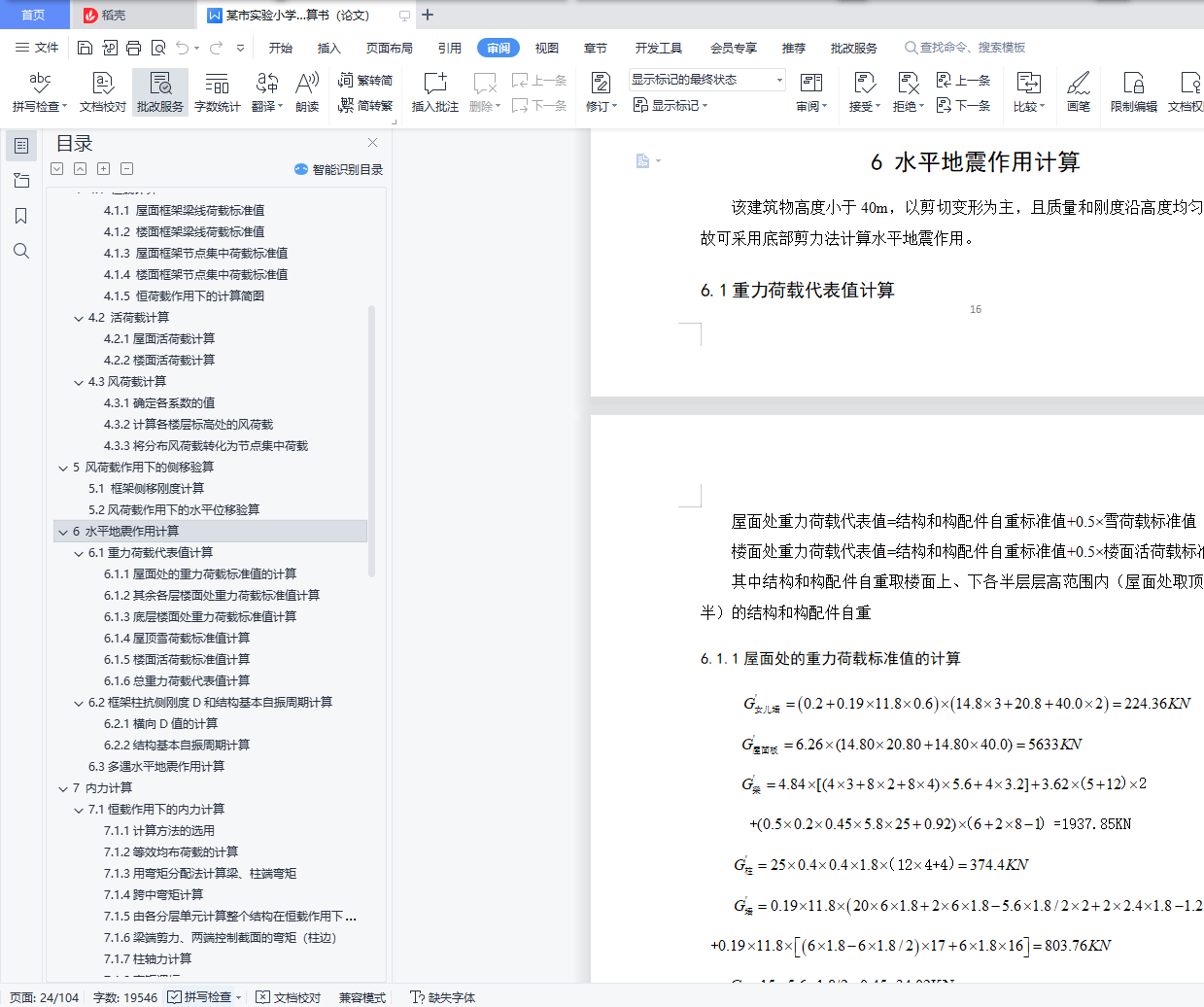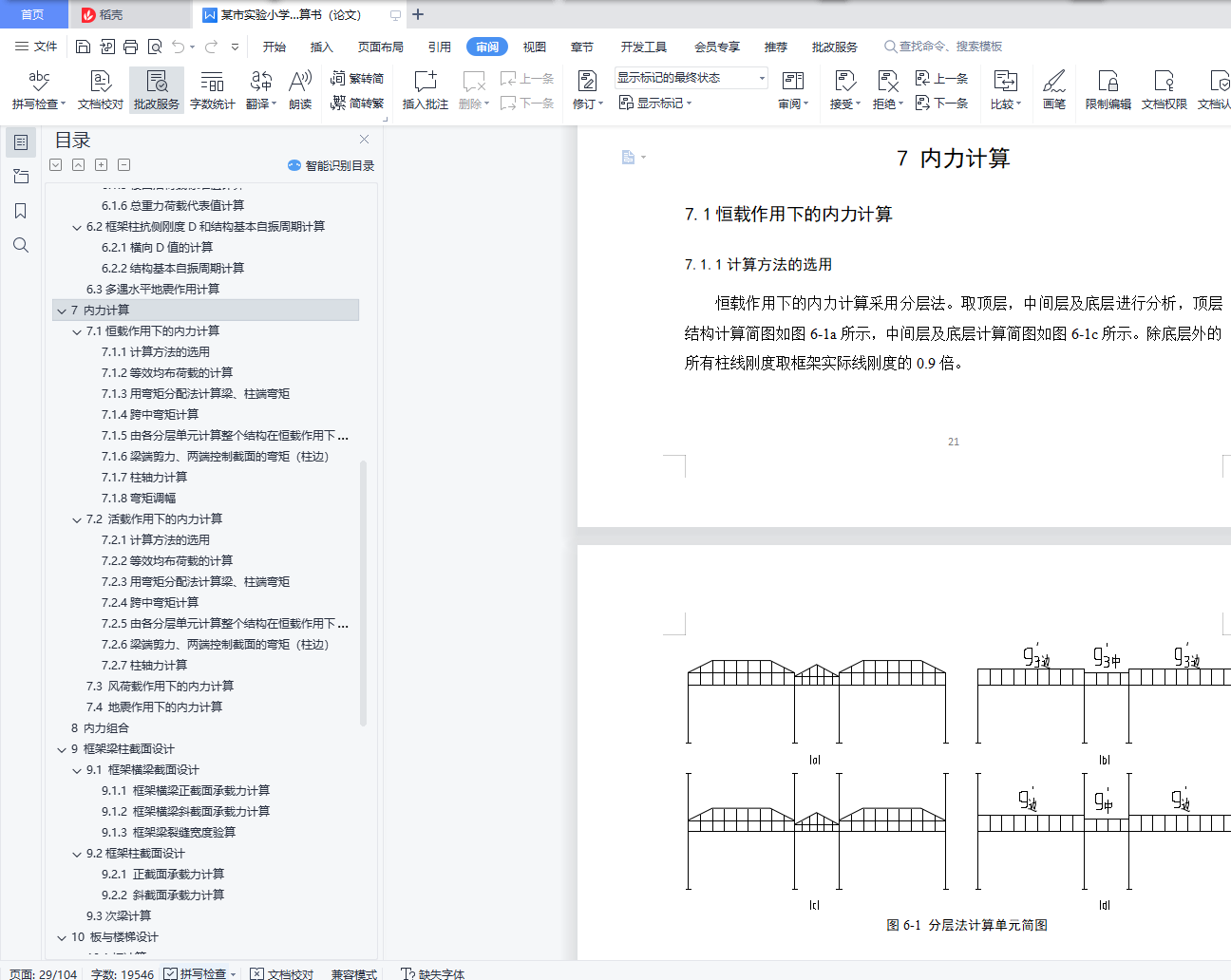摘 要
由于小学生人数不断增加,原有的教学楼已经不能满足现有的要求。为适应规模扩大的需要,拟建一栋总建筑面积3000平方米、上下波动10%以内的多层教学楼。最初位于学校场地的地形是平坦的。
本文阐述了小教室结构设计的要点和注意事项,并提出了合理可行的调整方法和工程设计实例,可供类似校舍结构设计参考。选择其中一名教师作为计算模型并使用手数。其中,固定荷载和活荷载的计算采用二次弯矩分布法,风荷载的计算采用D值法。在强度组合过程中,考虑荷载的交叉布置和地震作用,通过寻找最不利的荷载组合对结构进行加固。在计算书中,还进行了楼板的配筋计算和地基的计算。其余结构由PKPM 软件计算。
本设计主要由两部分组成。第一部分是建筑设计,第二部分是结构设计。本着安全、适用、美观、经济的原则进行设计,主体采用三层内廊结构。一些经验性的建议,使教育建筑的建筑结构即使受到小地震的破坏。 3级抗震目标即使在中等地震中也能修复,即使在大地震中也不会倒塌。
关键词:框架;教学楼;D值法;建筑设计;结构设计
Abstract
Due to the increasing number of primary school students, the original teaching building can not meet the existing requirements.In order to meet the needs of scale expansion, a multi-storey teaching building with a total construction area of 3,000 square meters and a fluctuation of within 10% is planned.The terrain originally located on the school site is flat.
This paper expounds the key points and precautions of small classroom structure design, and puts forward reasonable and feasible adjustment methods and engineering design examples for the reference of similar school building structure design.One of the teachers was selected as the calculation model and used the hand number.Among them, the fixed load and the live load are calculated by the secondary bending moment distribution method, and the wind load is calculated by the D value method.During the strength combination, the structure finds the most unfavorable load combination.In the calculation book, the floor reinforcement calculation and the foundation calculation are also carried out.The remaining structures were calculated by the PKPM software.
The design is mainly composed of two parts.The first part is the architectural design, and the second part is the structural design.In line with the principles of safety, applicability, beauty and economy, the main body adopts the three-story inner corridor structure.Some empirical advice makes the architectural structure of educational buildings even damaged by small earthquakes.Level 3 seismic targets can be repaired even in moderate earthquakes and will not collapse even in large earthquakes.
Key words: frame; teaching building; D value method; architectural design; structural design
目 录
摘 要 I
Abstract II
1 绪论 1
2建筑设计 2
2.1 工程概况 2
2.2 建筑做法 2
3 结构选型、结构布置及结构计算简图 3
3.1 结构选型 4
3.2 结构布置 4
3.3梁柱截面尺寸初选 4
3.3.1梁截面初选 4
3.3.2柱截面估算 5
3.4结构计算简图 5
4 荷载计算 7
4.1 恒载计算 7
4.1.1 屋面框架梁线荷载标准值 7
4.1.2 楼面框架梁线荷载标准值 7
4.1.3 屋面框架节点集中荷载标准值 8
4.1.4 楼面框架节点集中荷载标准值 9
4.1.5 恒荷载作用下的计算简图 9
4.2 活荷载计算 11
4.2.1屋面活荷载计算 11
4.2.2楼面活荷载计算 11
4.3风荷载计算 12
4.3.1确定各系数的值 12
4.3.2计算各楼层标高处的风荷载 12
4.3.3将分布风荷载转化为节点集中荷载 12
5 风荷载作用下的侧移验算 13
5.1 框架侧移刚度计算 14
5.2风荷载作用下的水平位移验算 15
6 水平地震作用计算 16
6.1重力荷载代表值计算 16
6.1.1屋面处的重力荷载标准值的计算 17
6.1.2其余各层楼面处重力荷载标准值计算 17
6.1.3底层楼面处重力荷载标准值计算 18
6.1.4屋顶雪荷载标准值计算 18
6.1.5楼面活荷载标准值计算 18
6.1.6总重力荷载代表值计算 18
6.2框架柱抗侧刚度D和结构基本自振周期计算 18
6.2.1横向D值的计算 18
6.2.2结构基本自振周期计算 19
6.3多遇水平地震作用计算 20
7 内力计算 21
7.1恒载作用下的内力计算 21
7.1.1计算方法的选用 21
7.1.2等效均布荷载的计算 22
7.1.3用弯矩分配法计算梁、柱端弯矩 23
7.1.4跨中弯矩计算 26
7.1.5由各分层单元计算整个结构在恒载作用下的弯矩图 28
7.1.6梁端剪力、两端控制截面的弯矩(柱边) 29
7.1.7柱轴力计算 32
7.1.8弯矩调幅 33
7.2 活载作用下的内力计算 33
7.2.1计算方法的选用 33
7.2.2等效均布荷载的计算 34
7.2.3用弯矩分配法计算梁、柱端弯矩 35
7.2.4跨中弯矩计算 37
7.2.5由各分层单元计算整个结构在恒载作用下的弯矩图 40
7.2.6梁端剪力、两端控制截面的弯矩(柱边) 41
7.2.7柱轴力计算 44
7.3 风荷载作用下的内力计算 45
7.4 地震作用下的内力计算 51
8 内力组合 55
9 框架梁柱截面设计 56
9.1 框架横梁截面设计 57
9.1.1 框架横梁正截面承载力计算 57
9.1.2 框架横梁斜截面承载力计算 59
9.1.3 框架梁裂缝宽度验算 61
9.2框架柱截面设计 62
9.2.1 正截面承载力计算 62
9.2.2 斜截面承载力计算 66
9.3次梁计算 67
10 板与楼梯设计 69
10.1板计算 69
10.1.1 B1板的计算 70
10.1.2 B2板的计算 73
10.1.3 B3板的计算 74
10.1.4 B4板的计算 75
10.1.5 B5板的计算 75
10.1.6 B6板的计算 76
10.1.7 B7板的计算 76
10.2楼梯计算 78
10.2.1 设计资料 78
10.2.2 踏步板设计 78
10.2.3 楼梯梁设计 80
10.2.4 平台板设计 81
10.2.5 平台梁设计 82
11 基础设计 84
11.1作用在基础顶面的荷载计算 84
11.1.1 A、D轴基础顶面的荷载计算 84
11.1.2 B、C轴基础顶面的荷载计算 85
11.2 A柱基础计算 86
11.2.1确定基础尺寸 86
11.2.2地基承载力验算 87
11.2.3冲切验算(采用基本组合) 87
11.2.4基础底面配筋计算(采用基本组合) 88
11.3 BC联合基础计算 89
11.3.1初步确定BC基础尺寸 89
11.3.2地基承载力验算(采用标准组合) 90
11.3.3冲切验算(采用基本组合) 90
11.3.4基础底面配筋计算 91
结 论 92
致 谢 93
参考文献 95
